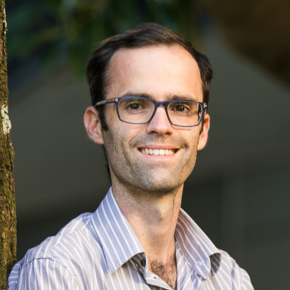- Posted on 11 May 2021
- 3-minute read
Dr Harry Hobbs’ book examines the design of Indigenous representative bodies and develops the case for constitutional change.
The federal government’s January report into options for a First Nations Voice is aimed at giving Aboriginal and Torres Strait Islanders a say in law and policy affecting them. That report was open for public consultation until the end of March 2021.
UTS law lecturer Dr Harry Hobbs’ research focuses on how the design of Indigenous representative bodies can help ensure that they are effective. His new book, Indigenous Aspirations and Structural Reform in Australia, examines these issues.
Dr Hobbs says the 239-page Indigenous Voice Co-Design Interim Report, developed by a Senior Advisory Group led by Professors Marcia Langton and Tom Calma, adds much needed detail to the Uluru Statement from the Heart’s proposed First Nations Voice.
“The report offers a series of practical and feasible options, explaining how an Indigenous representative body could ensure Aboriginal and Torres Strait Islander peoples have their voices heard in decisions that affect them in a manner consistent with Australia’s system of government.”
However, he says challenges may arise if the government is unreceptive to Aboriginal and Torres Strait Islander peoples’ priorities, or does not choose to consult or engage with the national voice on certain issues.
“Under the current proposal there is no mechanism that requires the government or Parliament consult and engage with the national voice. However, one approach, favoured by the proponents of the Uluru Statement from the Heart, provides a creative solution,” says Dr Hobbs.
“The Uluru Statement calls for a constitutionally entrenched First Nations Voice.
“This desire is informed by the experiences of previous national Indigenous representative bodies in Australia, but it also reflects the view that constitutional entrenchment is key to the effectiveness and success of the body,” he says.
I encourage all Australians to have their say. We should tell our government that we want them to listen to Aboriginal and Torres Strait Islander peoples.
In the context of the ongoing public debate on law reform in Australia, Dr Hobbs says his book develops a distinctive case for substantive constitutional change that advances Australia’s commitment to social justice.
“Institutions that empower Indigenous peoples to speak on law and policy are relatively common across the globe.
“The book explores whether Indigenous representative bodies, both in Australia and overseas, have proved effective in empowering Indigenous peoples with the capacity to have their voices heard and interests considered in the processes of government.
“By engaging directly with Indigenous people’s nuanced and complex political aspirations and drawing insights from two key case studies of Indigenous representative bodies, it offers a creative and practical solution to this pressing issue,” he says.
Following the consultation period, the Australian government is expected to settle on a preferred option to legislate an Indigenous representative body.
Dr Hobbs says while the advisory group was not allowed to make recommendations on constitutional change, this does not prevent ordinary Australians from doing so.
“I encourage all Australians to have their say. We should tell our government that we want them to listen to Aboriginal and Torres Strait Islander peoples. Once the design is worked out, the First Nations Voice should be put to a referendum,” he says.
This is Law research in action
See where a Law research degree could take you.
Researcher

Harry Hobbs
Lecturer, UTS Faculty of Law



